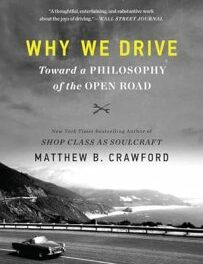We support our Publishers and Content Creators. You can view this story on their website by CLICKING HERE.
Like a crooked district attorney who throws as many charges as possible against a defendant, hoping that some of them will stick, I as a teacher throw as many texts and topics at the students as possible without overloading them. Thus, one can see what works and what doesn’t—but never be short of material.
“We come altogether fresh and raw into the several stages of life,” wrote Francois de la Rochefoucauld, “and often find ourselves without experience, despite our years.” This is one of those truths that seems impossible when young. One often assumes that adults “have it all together” and are capable of “adulting” at a high level. Yet the older one gets, the more one realizes how much most of life is improvisation based on previous experiences that are only similar to what one faces now. I rediscover this truth each time I teach a new class.
Granted, it’s true that the teacher who has taught before is not completely without experience. I have been teaching for more than twenty years and know the basics of getting together a syllabus with readings, assignments, quizzes, and tests. Yet, beyond the basic mechanics, a new course is necessarily a bit like testing a cannon. One never knows exactly which elements will cause an explosion. Worse? Which elements will be duds.
Part of the difficulty is that new classes are often in areas where one has a patchy knowledge at best. My late teacher, Fr. Louis Pascoe, S. J., a cherubic historian of Italian extraction, used to recount how as a young Jesuit, one’s provincial would ask some question about one’s knowledge of, say, chemistry. The correct response, Fr. Pascoe instructed us, was: “I don’t know. I haven’t taught it yet.” Back to the books the young Jesuit would go to figure out how to teach high school students a subject last studied as an undergraduate or possibly as a high schooler oneself.
Because I have taught at the university level, I have not had to go so far afield in my teaching. Thank the Lord. I’m afraid my knowledge of chemistry is comparable with Woody Allen’s summary of his knowledge of War and Peace after speed-reading: “It involves Russia.”
Yet, even if one has some larger knowledge of a subject, teaching it is itself, pardon the phrase, a different subject. What are the most important aspects of the subject to make sure the student knows? In what order should one approach them? How ought one to test the knowledge of them? What kind of essays will demonstrate proficiency and also make the students stretch their minds a bit? And which books, essays, articles, poems ought one to assign?
The great temptation for the instructor is to try to cover everything. John Henry Newman and his friend Robert Wilberforce (a son of the Great Emancipator) had a nickname for the kinds of sermons that tried to cover all of Revealed Faith: 180-degree sermons. Younger teachers with more energy—and, perhaps, more of a desire to prove they are truly qualified to teach—are particularly vulnerable to this. Especially those teaching core curriculum courses that lend themselves to an overly expansive approach. At a previous university, I taught a course a few times that was often summarized as “Genesis to Vatican II.” There were a great many suggested readings. The first time I taught it, I think I assigned students all of those readings.
180 degrees it was! It was, I think, a great failure. I was still young enough that I thought all students read all the material. That’s what I had done as an undergraduate. Of course, that’s why I ended up as a professor. Not all students approach courses the same way. Even in the early years after the millennium had turned, many students were simply looking to get by with their gentleman’s B. It used to be a C, but grade inflation has hit everywhere. That didn’t require reading everything; it could be accomplished by reading what one felt like, listening to the lectures periodically, and bugging one’s friends who were punctilious about doing the work themselves.
One has to learn how much students will be willing to read. In the core curriculum courses, this has always been much less than the professor would like. Today, it’s much lower than that.
Even in major courses, one has to learn to give a reasonable amount of reading and be careful of the difficulty. Yet if one hasn’t taught the course before, it’s often difficult to make decisions about what really works in a course and what is more and what less essential for a good course. Thus, even the experienced teacher will be tempted to assign more than he actually wants to cover. That way, if he is preparing the material and discovers that this will be difficult to teach with vanishingly small returns, he can do something else that is on the syllabus anyway. Every syllabus ought to include the magical, necessary words “This reading list is subject to revision at the discretion of the instructor.”
This incantation will come in handy as it did for me a few years ago when I was teaching another new class that had on its suggested list of readings C. S. Lewis’s Miracles. I had not read the book since I was a graduate student and thus did not remember how thick a philosophical volume it was. Give the freshmen The Screwtape Letters. Give them The Great Divorce. Maybe even The Abolition of Man. Do not, unless you are teaching an honors section, give them Miracles. After desultory results (at best), I bagged the book half-way through.
I confess that this temptation to assign more than I can cover the first time around has been one for which I have ceased to pray that the Lord would lead me not into. At this stage of the game, I have found it myself. In fact, I have now made it into a doctrine.
That doctrine is The Crooked DA Theory of Course Development. Crooked district attorneys attempting to frame some hapless fellow will throw as many charges against him as possible, hoping that some of them will stick, if only because a jury will conclude that a great many accusations are good evidence that the accused has committed some of them. The pedagogical version of this is to throw as many texts and topics at the students as possible without overloading them. Thus, one can see what works and what doesn’t—but never be short of material. It is labor intensive, but if one has more material than one needs, the likelihood is that enough material will work well enough to avoid completely remaking the course the second time.
My guess is that some professors have ended up doing that. Some years ago, I was sitting with a historian at a dinner to be followed by a lecture by British scholar Eamon Duffy. While discussing our then-current classes, he suddenly asked me, “What is the purpose of the first six times you teach a class?”
Not having the faintest idea where he was going, I shook my head.
“To figure out,” he intoned, “how to teach it wrong.”
Arrogantly, no doubt, I scoffed that this was a bit too much. Six times? Maybe two or three? I think part of why I doubted was that I had several times taken over classes that had been taught by veteran teachers who shared their developed syllabi with me. These often work very well with a few edits. And for those courses I had developed on my own at the time, I had gotten a bit lucky with my selections.
Since then, however, I have taught a good many more new classes, sometimes ones that I have concocted, sometimes ones that have been developed by others but in such a way that I didn’t think I could adapt their syllabi. My success rate has been lower in terms of first-time courses. Not that they have been terrible. I am an academic vaudevillian whose chief talent is working in jokes and routines that will get students to laugh and think a bit. But I can tell when material is not working. And that has certainly happened. Older and maybe even wiser, I am less inclined to scoff at that historian whose name I have now forgotten.
That unpleasant recognition that I am without experience in teaching this particular subject or assigning appropriate readings for that one has smacked me in the face hard enough to feel a sting. My saving grace, I think, has been the Crooked DA Theory. It’s hard to be wrong about everything. So, too, is it hard to be wrong about the entirety of one’s reading list. Thus, it is that if getting a particular course into shape is not as quick as it once was, my large-but-prunable reading list means it won’t take forever.
In any case, I take comfort that, at worst, the sixth time’s the charm.
The Imaginative Conservative applies the principle of appreciation to the discussion of culture and politics—we approach dialogue with magnanimity rather than with mere civility. Will you help us remain a refreshing oasis in the increasingly contentious arena of modern discourse? Please consider donating now.
The featured image is “Portrait of a Scholar” (between circa 1525 and circa 1530), by Quinten Metsys, and is in the public domain, courtesy of Wikimedia Commons.

 Conservative
Conservative  Search
Search Trending
Trending Current News
Current News 





